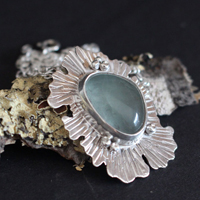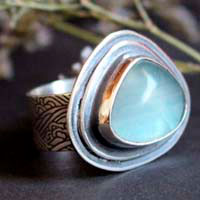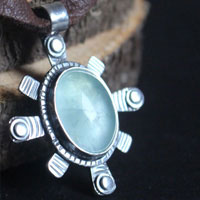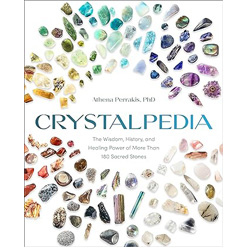- Jewelry
- Inspiration
- Our imagination
- Birthstones
- Celebrating with Eternal Flowers
- Druids and druidesses
- Flower meanings
- History, archeology jewelry
- History and healing properties of metals
- History and healing properties of stone
- Illumination jewelry
- Japanese symbols
- Maya calendar jewelry
- Stone color symbolism
- Stones catalogue
- Wedding anniversaries
- Searches a theme on the site
- Good Deals
- Paintings
- About
- Contact
JEWELRY
- Anklet
- Bracelets
- Brooches
- Cufflinks
- Earrings
- Pendants & Necklaces
- Rings
- Draw your jewelry
- How to clean your jewel
- Metal we used
INSPIRATION
- Our imagination
- Birthstones
- Celebrating with Eternal Flowers
- Druids and druidesses
- Flower meanings
- History, archeology jewelry
- History and healing properties of metals
- History and healing properties stones
- Illumination jewelry
- Japanese symbols
- Maya calendar jewelry
- Stone color symbolism
- Stones Catalogue
- Wedding anniversaries
- Searches a theme on the site
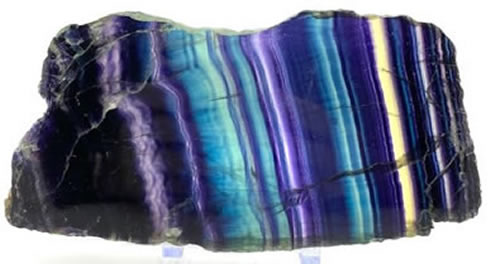
Fluorite: history, healing properties and lithotherapy
Fluorite properties

Fluorite, which is abundantly found in nature, derives its name from the Latin word "fluere," meaning "to flow" or "to melt."
Its history dates back to antiquity, with the first known description attributed to Georgius Agricola in 1529. In 1797, the naturalist Carlo Antonio Galeani Napione officially named it fluorite, likely due to its use as a flux in the steel industry, where it acted as a binder between various metals.
Composed of calcium fluoride, fluorite belongs to the halide class of minerals and predominantly forms cubic crystals, though less common parallelepiped crystals can also occur. In its pure state, fluorite is initially colorless and transparent. However, its color range extends across nearly the entire spectrum due to the presence of impurities, earning it the nickname "the most colorful stone in the world."
The most common hues range from lilac to violet, but transparent, red, black, pink, coffee, yellow, blue, green, and even multicolored specimens can also be found. Certain varieties, such as fluorescent fluorite, display a particular glow when exposed to UV light. Fluorescent crystals, in particular, can emit visible light in darkness, adding to their allure.
Fluorite is typically found in granite rock veins and is often associated with other minerals such as quartz, calcite, and barite. The largest fluorite crystal ever discovered was reportedly located in Russia, measuring 2.12 meters in height and weighing 16 tons, demonstrating the impressive size these formations can reach.
It is also known by various other names such as androdamant, Derbyshire spar, calcium fluorite, bruiachite, chrome-fluorite, liparite, spath fluor, and spath fusible. These names reflect not only its chemical characteristics but also the different regions and cultures that have interacted with this mineral.
In industry, fluorite is primarily used to produce hydrofluoric acid, which is essential in aluminum processing. It is also widely used in the production of enamel, translucent glass, and eyeglass lenses. Additionally, due to its low dispersion properties, fluorite is valuable in optical applications, making it ideal for crafting lenses and prisms.
Mines: Pakistan, Russia, Czech Republic, Peru, Germany, Spain, China, Switzerland, Mexico and South Africa.
History, beliefs and legends about the fluorite
Fluorite has always been admired for its vast range of colors, with some civilizations even perceiving it as crystallized light, a testament to its brilliance and unique beauty.
The Chinese used purple fluorite as a protective talisman, believing it to repel evil spirits and attract good fortune. Green fluorite, on the other hand, sometimes replaced the highly prized jade in sculptures, offering a vibrant and colorful alternative.
The Egyptians carved beads, scarabs, and statues of gods from fluorite, incorporating this stone into their spiritual and cultural rituals.
It is likely that the Greeks used fluorite and its hues to create the famous Murrhine vases, prized for their elegance and originality.
The Romans believed that drinking alcohol from a cup carved out of fluorite would prevent intoxication, a belief that underscores the symbolic and practical importance of this stone in ancient times. Fluorite objects have been discovered in the ruins of Pompeii, highlighting its widespread use in the daily lives of ancient Romans.
After the conquest of Britain, the Romans began to mine the famous "Blue John," a distinctive blue-yellow variety of fluorite. This stone was so highly valued that they were willing to spend large sums to acquire it, as recorded by Pliny the Elder, who mentioned that Emperor Nero reportedly paid the equivalent of $240,000 for an exceptional specimen.
In the Middle Ages, fluorite was nicknamed "flower of the ore," a term that evokes both its beauty and its value as a material.
In America, sculptures dating back to the Mississippian culture builders (900-1650) have been discovered, including beads, pendants, ear ornaments, and statuettes made from fluorite, revealing the stone’s significance in the rituals and adornments of this culture.
Healing properties and benefits of the fluorite
Throughout the long history of humanity, fluorite has been attributed various properties, virtues, and interpretations of a curative nature. The information presented here is shared from a cultural and historical perspective, with the aim of illustrating the symbolic relationship that has gradually developed between this stone and human societies over the centuries. Like the previous elements, these interpretations form part of a descriptive and historical approach. They do not constitute any therapeutic or medical recommendation and do not reflect our beliefs.
- Fluorite is traditionally associated with the relief of joint disorders such as arthritis, rheumatism, or gout. In certain traditions, it is mentioned as a stone believed to accompany the reduction of stiffness and inflammatory sensations, symbolically contributing to improved mobility and greater joint comfort.
- It is also frequently mentioned in connection with bone and dental health. Due to its fluorine-rich composition, fluorite has often been associated with the strengthening of bones and teeth, as well as with the prevention of dental imbalances, particularly in older interpretations related to hygiene and skeletal solidity.
- Fluorite is further cited in some traditions for its symbolic relationship with veins, the bladder, and the urinary system. In this context, it is associated with a more harmonious circulation of fluids and with symbolic support for elimination functions. This interpretation sometimes extends to the lymphatic system, with fluorite being described as a stone linked to purification and the elimination of toxins.
- Known in popular traditions for its so-called purifying qualities, fluorite is often mentioned as a stone accompanying the body during seasonal infections. It is associated with symbolic support of the immune system, particularly in contexts related to flu-like states or viral or bacterial conditions, without these uses being based on established medical evidence.
- Fluorite is also evoked in relation to certain painful conditions such as herpes, ulcers, or lumbago. Within these symbolic interpretations, it is associated with the easing of pain and with support for recovery processes, especially during periods of physical vulnerability.
- Fluorite is sometimes mentioned in traditions related to eating disorders, such as overweight or bulimia. It is then associated with the search for overall balance, both physical and emotional, and with a healthier relationship to the body and to food. This dimension is often accompanied by symbolism linked to purification and regulation.
- In some cultural approaches, fluorite is also connected to the digestive system. It is then described as a stone that may symbolically accompany digestive discomfort, bloating, or intestinal imbalances, supporting the functions of assimilation and elimination.
- Fluorite is widely cited for its symbolic link with the nervous system. It is traditionally associated with the accompaniment of neurological conditions such as Parkinson’s disease, convulsions, epilepsy, or headaches. It is also mentioned for its association with mental clarity, concentration, and the easing of anxiety, making it a stone often linked to periods of mental overload or prolonged stress.
- It is sometimes mentioned in connection with seasonal allergic reactions. In this symbolic reading, fluorite is associated with improved adaptation of the body to external aggressions and with the easing of inflammatory responses related to allergies.
- In cases of nerve-related conditions such as shingles, fluorite is evoked as a stone that may symbolically accompany pain relief and support regeneration processes, contributing to a gradual return to balance.
Healing properties and benefits the blue fluorite
- Blue fluorite is more specifically associated with visual disorders. In certain traditions, it is mentioned as a stone that may accompany eye infections, irritations, or blockages of the tear ducts, symbolically encouraging clearer vision and a soothing of the visual sphere.
- It is also cited for its connection with ailments of the throat, inner ear, and upper respiratory tract. Blue fluorite is then associated with the easing of ENT-related discomforts such as loss of voice, throat irritations, or nasal congestion, accompanying the symbolic calming of inflammatory processes.
- Finally, some traditions attribute to blue fluorite a potential role in accompanying cognitive disorders such as Alzheimer’s disease or senile dementia. Although these associations are primarily symbolic in nature and call for great caution, this stone is sometimes perceived as a support in approaches aimed at preserving mental clarity and memory functions.
 Please note that all healing properties attributed to stones come from ancient traditions and various cultural sources. This information is provided for informational purposes only and does not constitute medical advice. In case of any health concerns, it is recommended to consult a qualified professional.
Please note that all healing properties attributed to stones come from ancient traditions and various cultural sources. This information is provided for informational purposes only and does not constitute medical advice. In case of any health concerns, it is recommended to consult a qualified professional.
Fluorite jewelry samples
To learn more about litotherapy, we recommend you the following books:

